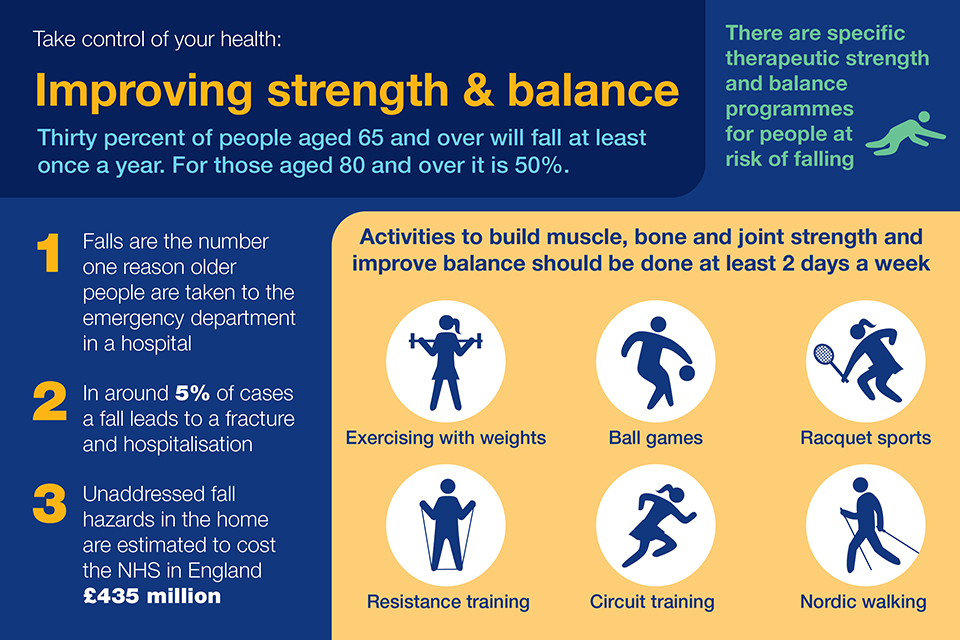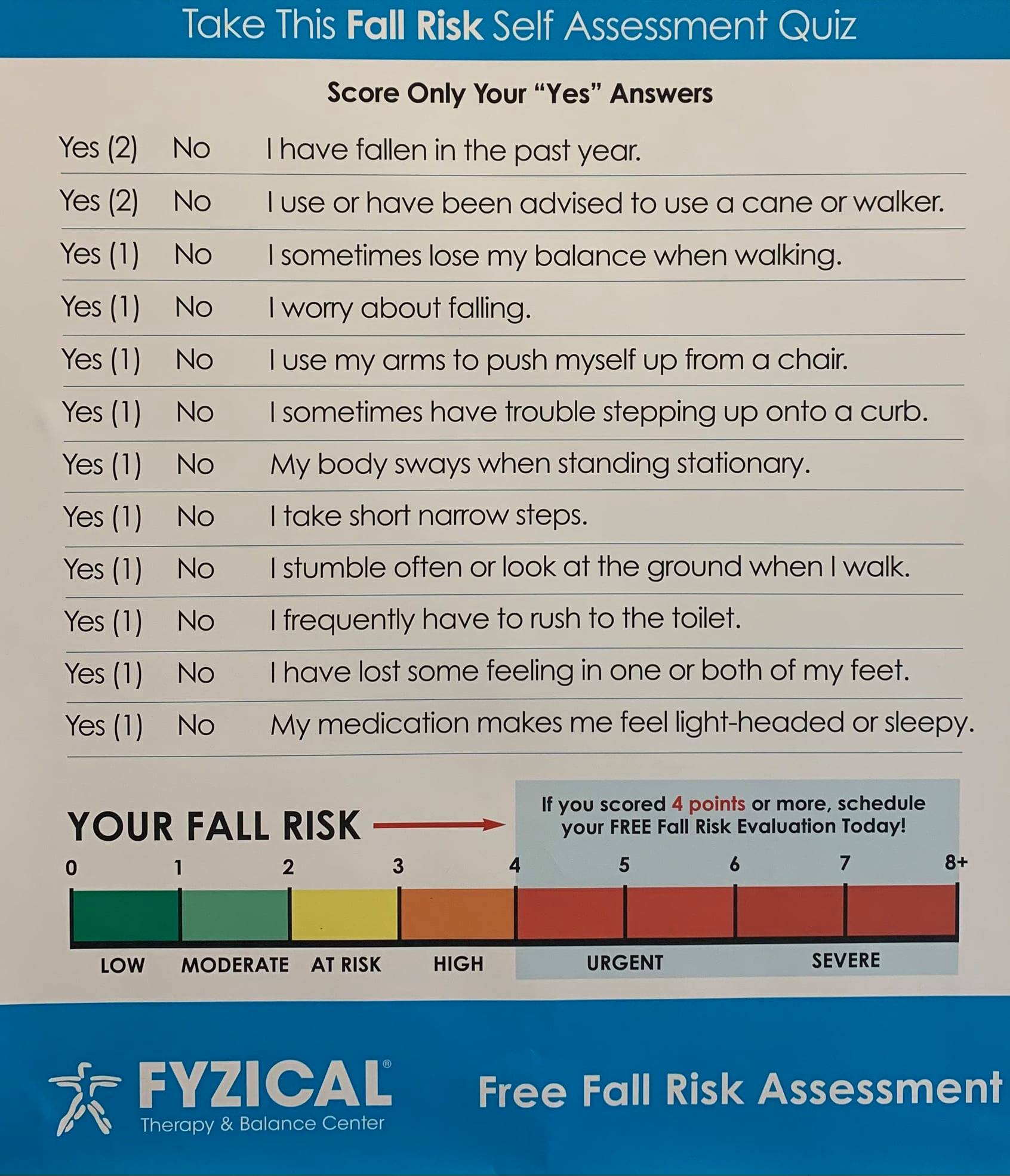Examine This Report on Dementia Fall Risk
Examine This Report on Dementia Fall Risk
Blog Article
About Dementia Fall Risk
Table of ContentsNot known Details About Dementia Fall Risk Dementia Fall Risk - QuestionsFacts About Dementia Fall Risk UncoveredThe smart Trick of Dementia Fall Risk That Nobody is Talking About
A fall threat analysis checks to see just how likely it is that you will certainly fall. It is mostly done for older adults. The evaluation generally consists of: This includes a collection of inquiries concerning your general health and wellness and if you've had previous falls or problems with balance, standing, and/or walking. These tools evaluate your toughness, equilibrium, and gait (the means you walk).STEADI includes screening, analyzing, and intervention. Treatments are recommendations that might lower your threat of dropping. STEADI includes 3 steps: you for your risk of dropping for your threat elements that can be enhanced to try to stop drops (for instance, balance issues, damaged vision) to decrease your threat of falling by making use of reliable techniques (as an example, supplying education and learning and resources), you may be asked several questions consisting of: Have you fallen in the previous year? Do you feel unstable when standing or walking? Are you fretted about dropping?, your provider will certainly check your toughness, equilibrium, and gait, utilizing the adhering to fall analysis tools: This test checks your stride.
You'll rest down once again. Your service provider will certainly examine the length of time it takes you to do this. If it takes you 12 seconds or more, it may mean you go to higher risk for an autumn. This examination checks stamina and equilibrium. You'll sit in a chair with your arms crossed over your breast.
The placements will get harder as you go. Stand with your feet side-by-side. Move one foot halfway forward, so the instep is touching the big toe of your other foot. Relocate one foot fully before the various other, so the toes are touching the heel of your other foot.
7 Simple Techniques For Dementia Fall Risk
Most drops take place as a result of several adding factors; for that reason, managing the risk of dropping begins with identifying the aspects that add to fall threat - Dementia Fall Risk. Several of the most relevant threat aspects consist of: Background of previous fallsChronic clinical conditionsAcute illnessImpaired stride and equilibrium, reduced extremity weaknessCognitive impairmentChanges in visionCertain risky medicines and polypharmacyEnvironmental variables can also increase the threat for drops, including: Inadequate lightingUneven or harmed flooringWet or unsafe floorsMissing or damaged hand rails and order barsDamaged or poorly fitted devices, such as beds, mobility devices, or walkersImproper use assistive devicesInadequate guidance of individuals staying in the NF, including those who display hostile behaviorsA effective loss risk monitoring program requires a detailed clinical analysis, with input from all members of the interdisciplinary group

The care plan must also consist of interventions that are system-based, such as those that advertise a safe atmosphere (proper illumination, hand rails, grab bars, etc). The efficiency of the interventions ought to be reviewed occasionally, and the care strategy changed as needed to reflect adjustments in the fall threat assessment. Applying a fall danger management system making use of evidence-based ideal practice can minimize the frequency of drops in the NF, while restricting the potential for fall-related injuries.
The Ultimate Guide To Dementia Fall Risk
The AGS/BGS standard suggests screening all adults matured 65 years and older for autumn threat every year. This screening is composed of asking people whether they have fallen 2 or even more times in the past year or looked for clinical attention for a fall, or, if they have not dropped, whether they really feel unsteady when walking.
Individuals who have actually dropped when without injury must check out here have their balance and stride reviewed; those with gait or equilibrium abnormalities need to obtain extra evaluation. A background of 1 fall without injury and without gait or equilibrium troubles does not call for further analysis past ongoing yearly loss threat screening. Dementia Fall Risk. A loss threat analysis is required as part of the Welcome to Medicare evaluation

The 3-Minute Rule for Dementia Fall Risk
Documenting a drops background is among the high quality indications for loss avoidance and administration. A critical component of danger evaluation is a medicine testimonial. Numerous courses of medications raise fall danger (Table 2). copyright drugs specifically are independent forecasters of drops. These medications often tend to be sedating, alter the sensorium, and harm balance and gait.
Postural hypotension can frequently be eased by reducing the dosage of blood pressurelowering medicines and/or quiting drugs that have orthostatic hypotension as a negative effects. Use above-the-knee support pipe and resting with the head of the bed boosted might also minimize postural reductions in blood stress. The preferred elements of a fall-focused physical exam are displayed in Box 1.

A pull time higher than or equal to 12 seconds recommends high loss risk. The 30-Second Chair Stand test analyzes lower extremity stamina and equilibrium. Being unable to stand from a chair of knee elevation without using one's arms indicates increased loss danger. The 4-Stage Balance examination analyzes fixed equilibrium by having the person stand in 4 positions, each progressively extra challenging.
Report this page